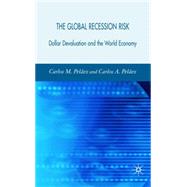
What is included with this book?
| List of Tables | p. ix |
| List of Abbreviations | p. xi |
| Acknowledgments | p. xiv |
| Preface | p. xvi |
| Leading Essay: Lessons from Adjustment of the Current Account | p. 1 |
| Introduction, Scope and Content | p. 8 |
| Policy Contributions | p. 20 |
| The United States current account | p. 20 |
| Risks | p. 21 |
| Savings and investment | p. 27 |
| Financial flows | p. 38 |
| China in Need of a New Paradigm | p. 56 |
| Introduction | p. 56 |
| The two Chinese economies | p. 59 |
| The Chinese exchange rate | p. 66 |
| The need of a new paradigm | p. 78 |
| Japan after Deflation | p. 81 |
| Summary | p. 81 |
| The lost decade | p. 82 |
| Fear of deflation in Japan, China, Europe and the Federal Reserve Board | p. 83 |
| Monetary policy | p. 95 |
| Exchange rate intervention | p. 107 |
| Structural reform | p. 109 |
| Conclusion | p. 111 |
| The Euro Area | p. 116 |
| Summary | p. 116 |
| The decline of Germany | p. 117 |
| Monetary policy | p. 119 |
| Fiscal imbalance | p. 127 |
| Productivity and structural reform | p. 135 |
| External balance | p. 144 |
| Currency Crashes | p. 147 |
| Sudden stops | p. 147 |
| The vulnerabilities of Mexico | p. 154 |
| Original sin and debt intolerance | p. 162 |
| The balance sheet approach | p. 174 |
| Appendix: Balance sheet effects in practice | p. 178 |
| The Restrictions of Policy of the United States | p. 188 |
| The budget and current account deficits | p. 188 |
| The economic and financial fundamentals of the United States | p. 202 |
| The limitations of policy | p. 212 |
| Policy guidelines | p. 215 |
| Conclusion | p. 218 |
| Appendix | p. 230 |
| Notes | p. 232 |
| Bibliography | p. 234 |
| Index | p. 255 |
| Table of Contents provided by Ingram. All Rights Reserved. |
The New copy of this book will include any supplemental materials advertised. Please check the title of the book to determine if it should include any access cards, study guides, lab manuals, CDs, etc.
The Used, Rental and eBook copies of this book are not guaranteed to include any supplemental materials. Typically, only the book itself is included. This is true even if the title states it includes any access cards, study guides, lab manuals, CDs, etc.